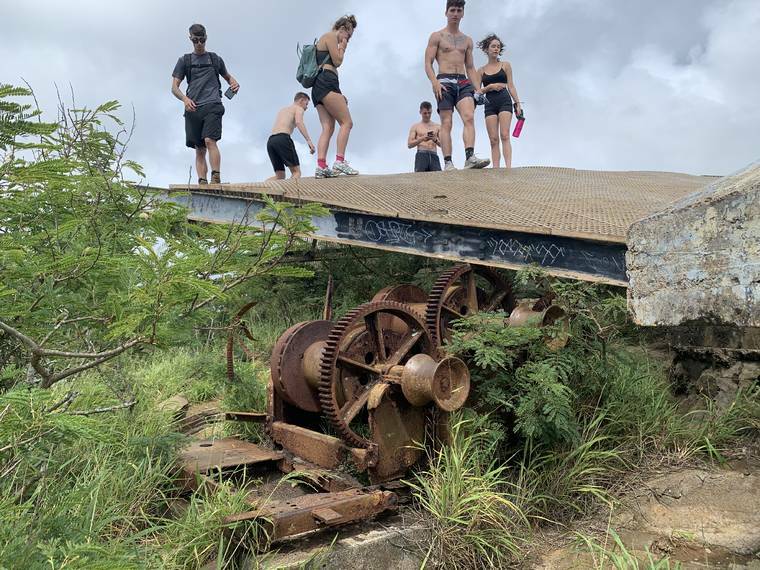City to replace viewing platform atop Koko Crater Stairs

COURTESY HONOLULU DEPARTMENT OF PARKS AND RECREATION
The current platform is seen at the top of Koko Crater Stairs.

COURTESY HONOLULU DEPARTMENT OF PARKS AND RECREATION / 2021
Hikers stand on a platform at the top of Koko Crater Stairs.


City officials today announced that a project to replace the dilapidated viewing platform at the summit of the popular Koko Crater Stairs hike begins this week.
The $426,800 project includes the dismantling of the current metal grate platform — which has rusted and collapsed on several sides — and replacing it with a new steel structure.
The popular trail will be closed, with access to the summit restricted, on four separate days — June 7, 16, 26, and 29 — when helicopter use is required to transport materials for the project.
The platform originally served as the top of a radar station during World War II, when the U.S. Army installed the tramway that has now become the trail known as Koko Crater Stairs.
The tramway was decommissioned and turned over to the city in 1966. Since then, the platform left behind has become a popular destination — considered by many the reward for the 1,000-plus steps climb — for its 360-degree views.
Officials said the new, rectangular platform is designed for recreational use and will offer about 71 square feet of viewing space, surrounded by railing, and accessible via a stairwell. It will be built atop the existing concrete foundation.
Don't miss out on what's happening!
Stay in touch with breaking news, as it happens, conveniently in your email inbox. It's FREE!
When helicopter flights are not taking place, the stairs will be open for regular use.
But access to the construction site will be restricted throughout the duration of the project, officials said, to maintain a secure environment.
The project’s design consultant is SEY Engineers, and the primary contractor is Kaikor Construction Company.
Officials said prior to moving forward with the project, they consulted with members of the nonprofit Kokonut Koalition, which raised funds and put in thousands of hours of volunteer labor to refurbish the trail in 2021.
This project represents the second of three phases the city and nonprofit agreed upon to address safety concerns at Koko Crater. It is scheduled to be finished by the end of summer.




